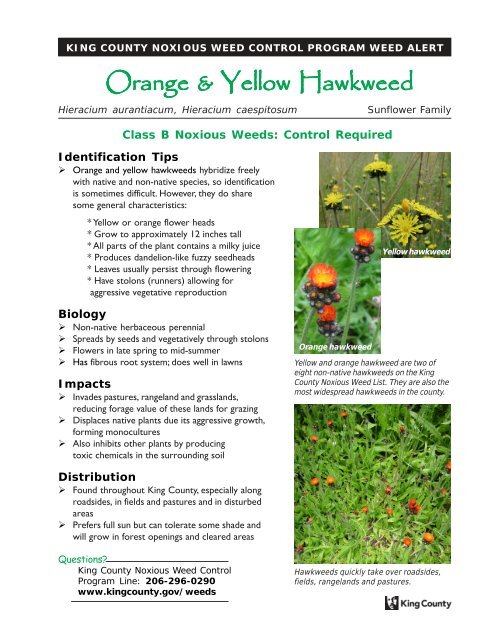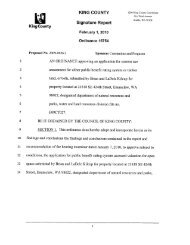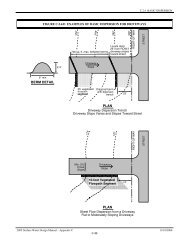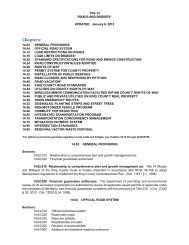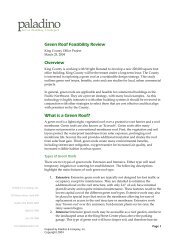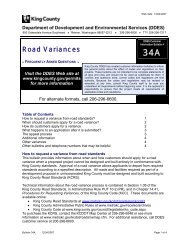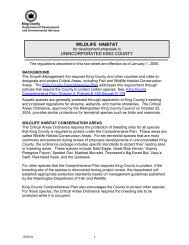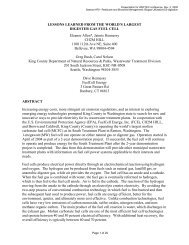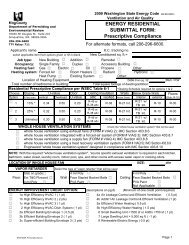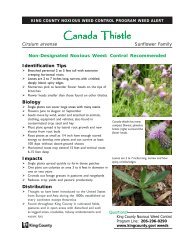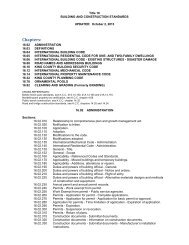Orange and Yellow Hawkweed (Hieracium ... - King County
Orange and Yellow Hawkweed (Hieracium ... - King County
Orange and Yellow Hawkweed (Hieracium ... - King County
You also want an ePaper? Increase the reach of your titles
YUMPU automatically turns print PDFs into web optimized ePapers that Google loves.
KING COUNTY NOXIOUS WEED CONTROL PROGRAM WEED ALERT<br />
<strong>Orange</strong> & <strong>Yellow</strong> <strong>Hawkweed</strong><br />
<strong>Hieracium</strong> aurantiacum, <strong>Hieracium</strong> caespitosum Sunflower Family<br />
Class B Noxious Weeds: Control Required<br />
Identification Tips<br />
‣ <strong>Orange</strong> <strong>and</strong> yellow hawkweeds hybridize freely<br />
with native <strong>and</strong> non-native species, so identification<br />
is sometimes difficult. However, they do share<br />
some general characteristics:<br />
* <strong>Yellow</strong> or orange flower heads<br />
* Grow to approximately 12 inches tall<br />
* All parts of the plant contains a milky juice<br />
* Produces d<strong>and</strong>elion-like fuzzy seedheads<br />
* Leaves usually persist through flowering<br />
* Have stolons (runners) allowing for<br />
aggressive vegetative reproduction<br />
Biology<br />
‣ Non-native herbaceous perennial<br />
‣ Spreads by seeds <strong>and</strong> vegetatively through stolons<br />
‣ Flowers in late spring to mid-summer<br />
‣ Has fibrous root system; does well in lawns<br />
Impacts<br />
‣ Invades pastures, rangel<strong>and</strong> <strong>and</strong> grassl<strong>and</strong>s,<br />
reducing forage value of these l<strong>and</strong>s for grazing<br />
‣ Displaces native plants due its aggressive growth,<br />
forming monocultures<br />
‣ Also inhibits other plants by producing<br />
toxic chemicals in the surrounding soil<br />
<strong>Orange</strong> hawkweed<br />
<strong>Yellow</strong> hawkweed<br />
<strong>Yellow</strong> <strong>and</strong> orange hawkweed are two of<br />
eight non-native hawkweeds on the <strong>King</strong><br />
<strong>County</strong> Noxious Weed List. They are also the<br />
most widespread hawkweeds in the county.<br />
Distribution<br />
‣ Found throughout <strong>King</strong> <strong>County</strong>, especially along<br />
roadsides, in fields <strong>and</strong> pastures <strong>and</strong> in disturbed<br />
areas<br />
‣ Prefers full sun but can tolerate some shade <strong>and</strong><br />
will grow in forest openings <strong>and</strong> cleared areas<br />
Questions?<br />
<strong>King</strong> <strong>County</strong> Noxious Weed Control<br />
Program Line: 206-296-0290<br />
www.kingcounty.gov/weeds<br />
<strong>Hawkweed</strong>s quickly take over roadsides,<br />
fields, rangel<strong>and</strong>s <strong>and</strong> pastures.
What You Can Do<br />
The <strong>King</strong> <strong>County</strong> Noxious Weed Control Program is<br />
actively trying to control the spread of hawkweeds. Do<br />
your part by removing this weed from your property <strong>and</strong><br />
washing vehicles, boots <strong>and</strong> animals that have been in<br />
infested areas. If you find it growing on public l<strong>and</strong>s,<br />
please report the location to our 24-hour program<br />
information line at 206-296-0290.<br />
Control Methods<br />
The preferred method of control is one that incorporates a<br />
multifaceted <strong>and</strong> adaptive approach. Control methods need<br />
to be applied over several years to be successful.<br />
Prevention: Most non-native hawkweeds were<br />
introduced from Europe as ornamentals, but over the<br />
years have escaped into the natural l<strong>and</strong>scape. Early<br />
detection <strong>and</strong> removal is often one of the best ways to<br />
control hawkweeds. Clean vehicles <strong>and</strong> equipment that<br />
have been in areas infested with hawkweed.<br />
Manual: Dig up plants in the spring or early summer<br />
when the soil is still moist <strong>and</strong> before the seeds mature.<br />
Plants can re-sprout<br />
from creeping stolons<br />
Care should be taken to remove<br />
the entire plant when h<strong>and</strong>-pulling.<br />
Revised June 2007<br />
Pre-flowering hawkweeds have dark colored,<br />
tightly clustered flowerbuds <strong>and</strong> fine<br />
hairs on the leaves <strong>and</strong> stems.<br />
<strong>and</strong> rhizomes so care should be taken to completely remove the<br />
entire root system. Cutting <strong>and</strong> pulling are ineffective unless done<br />
with frequency <strong>and</strong> diligence to eliminate re-growth. If the plant is<br />
in flower, cut off the flower head, bag <strong>and</strong> dispose of it into the<br />
regular trash. <strong>Hawkweed</strong>s can form viable seeds after they are cut<br />
or dug up. Mowing is not recommended. Mowed plants<br />
respond by quickly flowering again.<br />
Mechanical: Regular tillage will help control hawkweeds on<br />
agricultural l<strong>and</strong>s. But care must be taken to pick up any stolons<br />
<strong>and</strong> rhizomes as they can quickly re-sprout.<br />
Chemical: Follow labels exactly as written <strong>and</strong> only use<br />
products appropriate <strong>and</strong> legal for the site. Glyphosate (such as<br />
Roundup) is effective but is a non-selective herbicide that will also<br />
kill grasses in the area being sprayed. When using a non-selective herbicide, you must re-seed with<br />
desirable vegetation. Bare areas will re-infest from existing seed bank <strong>and</strong> any missed hawkweed<br />
plants. Triclopyr (such as Brush B Gone) is a selective herbicide that targets only broadleaf plants so<br />
it may be used in grassy areas. Treatment is most effective in the<br />
spring <strong>and</strong> early summer. Apply the herbicide to entire leaf <strong>and</strong> stem<br />
surface of actively growing plants. For more information, please<br />
contact the <strong>King</strong> <strong>County</strong> Noxious Weed Control Program.


